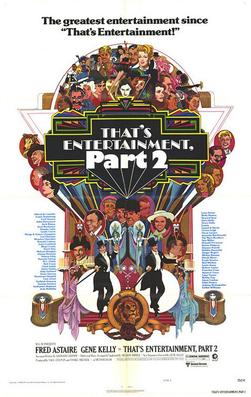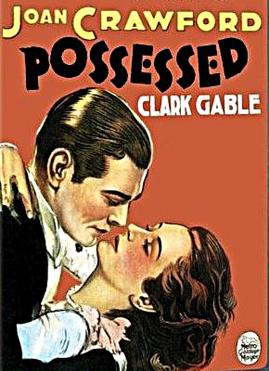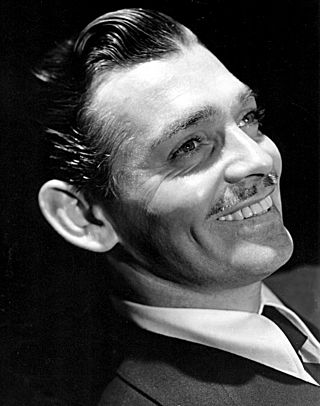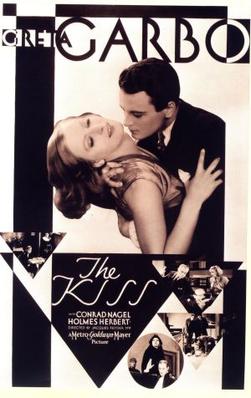
Grand Hotel is a 1932 American pre-Code drama film directed by Edmund Goulding and produced by Metro-Goldwyn-Mayer. The screenplay by William A. Drake is based on the 1930 play of the same title by Drake, who had adapted it from the 1929 novel Menschen im Hotel by Vicki Baum. To date, it is the only film to have won the Academy Award for Best Picture without being nominated in any other category.

Ninotchka is a 1939 American romantic comedy film made for Metro-Goldwyn-Mayer by producer and director Ernst Lubitsch and starring Greta Garbo and Melvyn Douglas. It was written by Billy Wilder, Charles Brackett, and Walter Reisch, based on a screen story by Melchior Lengyel. Ninotchka is Greta Garbo's first full comedy, and her penultimate film; she received her third and final Academy Award nomination for Best Actress. In 1990, Ninotchka was selected for preservation in the United States National Film Registry by the Library of Congress as being "culturally, historically, or aesthetically significant". In 2011, Time also included the film on the magazine's list of "All-Time 100 Movies".

Greta Garbo was a Swedish-American actress and a premiere star during Hollywood's silent and early golden eras. Regarded as one of the greatest screen actresses of all time, she was known for her melancholic, somber persona, her film portrayals of tragic characters, and her subtle and understated performances. In 1999, the American Film Institute ranked Garbo fifth on its list of the greatest female stars of classic Hollywood cinema.

Sarah and Son is a 1930 pre-Code American drama film directed by Dorothy Arzner. The screenplay by Zoë Akins was adapted from Timothy Shea's novel of the same name. It stars Ruth Chatterton, Fredric March, Gilbert Emery, and Doris Lloyd. It was filmed at Paramount Studios in Los Angeles and released by Paramount Pictures.

Romance is a 1930 American Pre-Code film directed by Clarence Brown, and starring Greta Garbo, Lewis Stone, and Gavin Gordon. Based on the 1913 play by Edward Sheldon, the film was written by Edwin Justus Mayer and Bess Meredyth, and distributed by Metro-Goldwyn-Mayer.

Queen Christina is a pre-Code Hollywood biographical film, produced for Metro-Goldwyn-Mayer in 1933 by Walter Wanger and directed by Rouben Mamoulian. It stars Swedish-born actress Greta Garbo and John Gilbert in their fourth and last film together.

That's Entertainment, Part II is a 1976 American compilation film released by Metro-Goldwyn-Mayer and a sequel to That's Entertainment! (1974). Like the previous film, That's Entertainment, Part II was a retrospective of famous films released by MGM from the 1930s to the 1950s. Some posters for the film use Part 2 rather than Part II in the title.

The Joan Crawford filmography lists the film appearances of American actress Joan Crawford, who starred in numerous feature films throughout a lengthy career that spanned nearly five decades.

Welcome to L.A. is a 1976 American drama musical romance film directed by Alan Rudolph and starring Keith Carradine and an ensemble cast. The film focuses on themes of romantic despair and shallowness in the decadent upper class during the 1970s, illustrated through a La Ronde-like circle of sexual adventures and failed affairs revolving around a womanizing songwriter, his businessman father, and their associates.

Hollywood Steps Out is a 1941 short Merrie Melodies cartoon by Warner Bros., directed by Tex Avery. The short was released on May 24, 1941.

Anna Karenina is a 1935 Metro-Goldwyn-Mayer film adaptation of the 1877 novel Anna Karenina by Leo Tolstoy and directed by Clarence Brown. The film stars Greta Garbo, Fredric March, Basil Rathbone, and Maureen O'Sullivan. There are several other film adaptations of the novel.

Two-Faced Woman is a 1941 American romantic comedy film directed by George Cukor and starring Greta Garbo in her final film role, Melvyn Douglas, Constance Bennett, and Roland Young. The movie was distributed by Metro-Goldwyn-Mayer.

Anna Christie is a 1930 Metro-Goldwyn-Mayer pre-Code film adaptation of the 1921 play of the same name by Eugene O'Neill. It was adapted by Frances Marion, produced and directed by Clarence Brown with Paul Bern and Irving Thalberg as co-producers. The cinematography was by William H. Daniels, the art direction by Cedric Gibbons and the costume design by Adrian.

Possessed is a 1931 American pre-Code drama film directed by Clarence Brown, starring Joan Crawford and Clark Gable and released by Metro-Goldwyn-Mayer. The film is the story of Marian Martin, a factory worker who rises to the top as the mistress of a wealthy attorney. The screenplay by Lenore J. Coffee was adapted from the 1920 Broadway play The Mirage by Edgar Selwyn. Possessed was the third of eight film collaborations between Crawford and Gable.

The Temptress is a 1926 American silent romantic drama film directed by Fred Niblo and starring Greta Garbo, Antonio Moreno, Lionel Barrymore, and Roy D'Arcy. It premiered on October 10, 1926. The film melodrama was based on a novel by Vicente Blasco Ibáñez adapted for the screen by Dorothy Farnum.

Torrent is a 1926 American silent romantic drama film directed by an uncredited Monta Bell, based on a novel by Vicente Blasco Ibáñez, and released on February 21, 1926. Torrent was the first American film starring Swedish actress Greta Garbo. The film also starred Ricardo Cortez and Martha Mattox.

Dance, Fools, Dance is a 1931 pre-Code Metro-Goldwyn-Mayer drama film starring Joan Crawford, Clark Gable, and Lester Vail in a story about a reporter investigating the murder of a colleague. Story and dialogue were created by Aurania Rouverol, and the film was directed by Harry Beaumont. Dance, Fools, Dance was the first of eight movies featuring Crawford and Gable.

Clark Gable (1901–1960) was an American actor and producer who appeared in over 70 feature films and several short films. Gable first began acting in stage productions, before his film debut in 1924. After many minor roles, Gable landed a leading role in 1931, subsequently becoming one of the most dominant leading men in Hollywood. He often acted alongside re-occurring leading ladies: six films with Jean Harlow, seven with Myrna Loy, and eight with Joan Crawford, among many others.

Inspiration is a 1931 American pre-Code Metro-Goldwyn-Mayer romantic melodrama film adapted by Gene Markey from the Alphonse Daudet short novel Sappho (1884). The film stars Greta Garbo, Robert Montgomery, Lewis Stone and Marjorie Rambeau. It was directed by Clarence Brown and produced by Irving Thalberg. The cinematography was performed by William H. Daniels, the art direction by Cedric Gibbons and the costume design by Adrian.

The Kiss is a 1929 American synchronized sound drama film directed by Jacques Feyder, starring Greta Garbo, Conrad Nagel, and Lew Ayres in his first feature film. The film has no audible dialogue but featured a synchronized musical score and sound effects. The soundtrack was recorded using the Western Electric Sound System sound-on-film process. The soundtrack was also transferred to discs for those theatres that were wired with sound-on-disc sound systems.





















